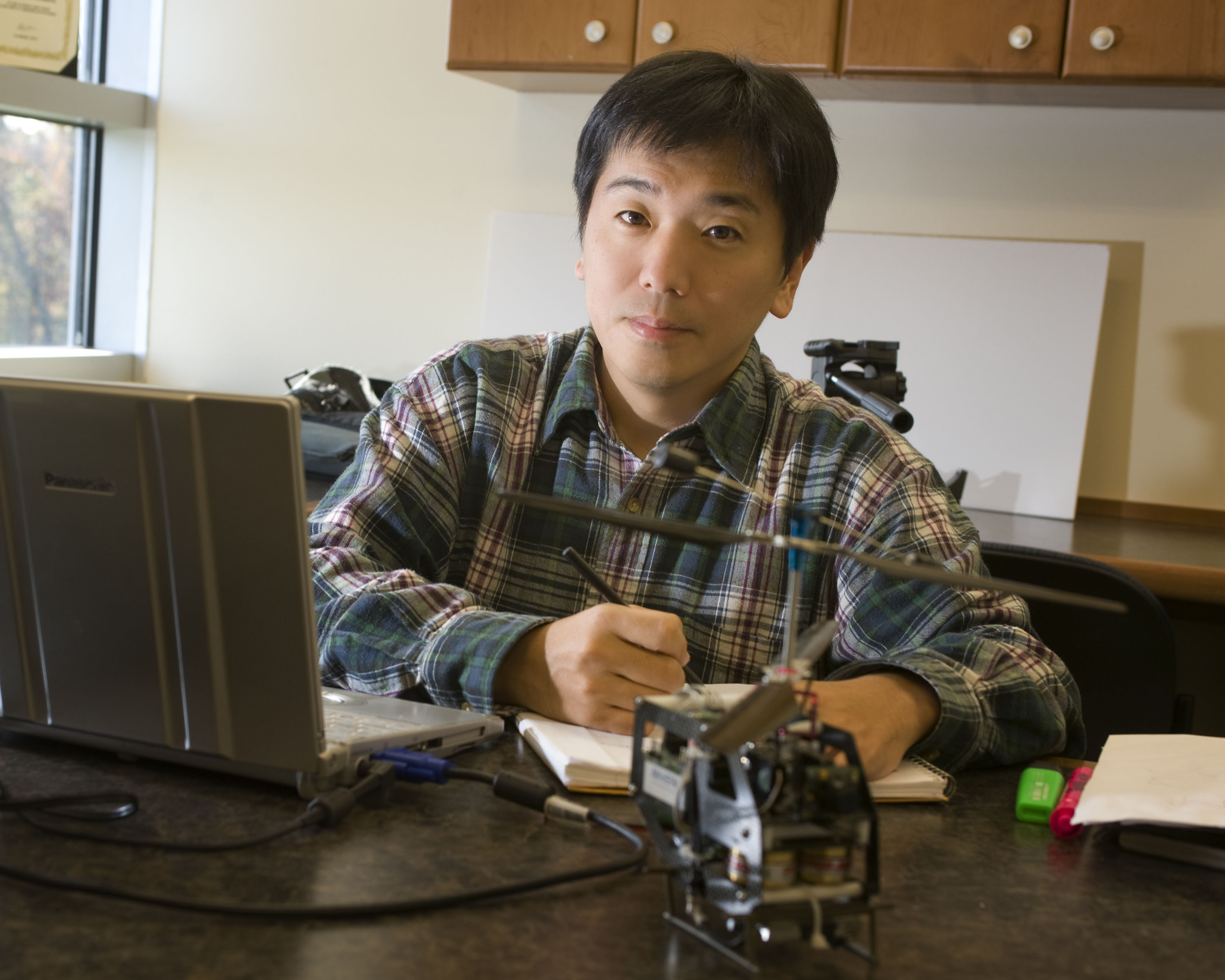College of Engineering team to build battlefield robots for 2010 competition

The roving, walking robotic soldiers of the "Terminator" films are becoming less sci-fi, and more certain future every day. Now, a team of robotics researchers from the Virginia Tech College of Engineering will build a team of fully autonomous cooperative battle-ready robots as part of a 2010 international war games challenge that could spur real-life battle bots.
The 2010 Multi-Autonomous Ground-robotic International Challenge (MAGIC) tasks teams with building squads of fully autonomous ground robots that will coordinate, plan, and execute a series of timed tasks including hunting objects, classifying and responding to simulated threats, and mapping diverse terrains at a field competition in Australia late this year. Among the specific tasks: Differentiate friendly non-targets from enemy targets, and shoot lasers at and jam the communications of the latter.
The top three winners will get cash prizes worth hundreds of thousands of dollars, and the chance to work with Australian and United States defense agencies to develop their robotic designs that one day may work alongside – and instead of – soldiers in future wars. Co-hosting the international competition are the U.S. Army Tank Automotive Research Development and Engineering Center and the Australian Department of Defense’s Defense Science and Technology Organization. The American unit is the core ground robotics development agency for the U.S. Department of Defense.
“We’ll have multiple small fully autonomous ground vehicles working together,” said project team member Dennis Hong, director of RoMeLa and an associate professor with the Virginia Tech mechanical engineering department. “There’s never been anything like this.”
Leading the team, which includes graduate and undergraduate students, is Tomonari Furukawa, an associate professor of mechanical engineering with Virginia Tech’s Institute for Advanced Learning and Research in Danville, Va. It is Furukawa’s previous employment with the University of New South Wales and the University of Sydney, both in Australia, and his work with military-sourced unmanned ground and air vehicles that garnered Virginia Tech an invitation to compete in the competition. In all, 10 international teams are part of the MAGIC competition, culled from 23 proposals. Chiba University in Japan, the University of New South Wales in Australia, and America’s Carnegie Mellon Robotics Institute, University of Pennsylvania, University of Michigan, and Cornell University are among the competitors.
“We have a group of talented students who are very competitive, and that helps in situations such as this one,” Furukawa added. “The multidisciplinary approach to both the team members and the faculty advisers give our team an extra edge. Dennis Hong’s experience in the DARPA Urban Challenge is invaluable, and his success as a leader in robotics research not only is confidence-building for our students, but also is extremely helpful as we try to best a very competitive slate of competitors.”
Working with Furukawa and Hong on the challenge are fellow College of Engineering faculty members Andrew Kurdila and Alexander Leonessa. Kurdila is a professor of mechanical engineering. Leonessa is an assistant professor of mechanical engineering. All are members of the university’s Virginia Center for Autonomous Systems or VaCAS.
As each of the 10 team heads toward the November 2010 robotic war game in Australia, they will be visited at their home campus by MAGIC organizers for preliminary tests of the robots. Organizers will then cut the roster of 10 to five. In addition to seed money of $50,000, the Australian-American agencies will provide successive funding to finalists, Hong said. In additional seed money, Virginia Center for Autonomous Systems director Craig Woolsey provided the team with $20,000 for support.
Final prizes, in addition to the coup of directly working with defense agencies, are $750,000 for first place, $250,000 for second place, and $100,000 for third place. (All amounts equal U.S. dollars.)
The final competition in Australia is expected to be three hours long, with the three robots handling one set goal each – one will jam “enemy” signals, the other will detect and differentiate “enemy” targets from friendly non-targets using sensors, and the third will have a laser weapon to “paint” targets. The mission will be based on a treasure hunt, with some target objects being stationary, while others will be mobile, Furukawa said.
The team, thus far, plans to re-engineer several high-end remote-controlled trucks and tanks for autonomous operation. While Hong will focus on the design of the robot hardware, while Leonessa will work on the integration of all actuators and onboard sensors and design the basic control systems, and Furukawa and Kurdila will develop the cooperative control strategy software. “The robots must be able to drive autonomously and communicate with each other. They must think for themselves and cooperate with each other to work,” Furukawa said. “That is the biggest challenge.”
Related Links
- Robotics and Mechanisms Laboratory develops a low cost, dexterous robotic hand operated by compressed air
- VictorTango wins $500,000 with an SUV that thinks like a driver
- Team wins international competition with robots designed to save lives of construction workers
- Blind can take wheel with vehicle designed by university engineering design team




